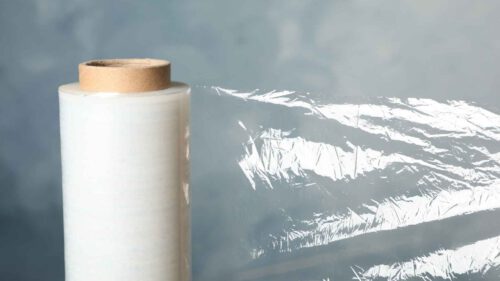
Shrink Film vs. Stretch Film
August 6, 2025
Stretch Film Strength
August 11, 2025Understanding Stretch Film Cling Strength
Understanding Stretch Film Cling Strength: Factors, Testing Methods, and Industrial Relevance
In industrial packaging, the cling strength of stretch film is a critical factor in ensuring pallet stability and load security. Whether you are a logistics supervisor or a production manager, knowing what impacts cling performance—and how to measure it—can make a significant difference in operational safety and cost efficiency.
What Is Cling Strength in Stretch Film?
Cling strength refers to the film’s ability to adhere to itself, not to the product. This self-cling property allows the layers of stretch film to stick together after wrapping, eliminating the need for adhesives or heat, and ensuring that the film holds tightly during transport and storage.
Key Factors Affecting Stretch Film Cling
The cling performance of a stretch film is influenced by a combination of formulation, manufacturing technique, and environmental conditions:
Polymer Formulation
The type and quality of raw polyethylene and tackifier additives used significantly impact cling strength.Production Technology (Cast vs. Blown)
Cast stretch films typically offer higher cling and are ideal for machine wrapping.
Blown films are more resistant to puncture but often have lower cling levels.
Layer Configuration (Multi-layer Structure)
Modern stretch films often have separate inner and outer layers—one engineered for cling, the other for slip or load release.Film Thickness
Thicker films provide more surface contact, which can improve physical cling but may reduce flexibility.Environmental Conditions
Temperature and humidity can affect cling performance; for example, cold environments may reduce tackiness.
How Is Cling Strength Measured?
There are several industry-standard methods to evaluate and quantify stretch film cling strength:
1. ASTM D4649 – Self-Adhesion Testing
This standardized test involves pressing two film layers together under specific pressure and measuring the force required to peel them apart. Results are typically reported in grams-force per inch (gf/in).
2. Tensile Machine Testing
Using a tensile testing machine, the pull force needed to separate layered film segments is recorded, offering precise, quantifiable data.
3. Field-Based Manual Assessment
In practical settings, operators often judge cling by hand during wrapping—evaluating how easily the film sticks to itself during application. While not scientific, this method is common in daily operations.
Karen’s Stretch Film: Engineered for Industrial Cling Performance
At Karen, one of Iran’s leading industrial stretch film manufacturers, we combine high-grade polymers with precision production techniques to deliver stretch films with consistent, balanced cling performance—even in high-speed machine applications.
✅ Key Features of Karen’s Stretch Film:
Optimized cling for load stability without over-sticking
Suitable for both manual and automatic stretch wrapping
No residue or product damage
Excellent performance across varying temperatures and packaging conditions

Why Cling Strength Matters in Packaging
Insufficient cling can result in unsecured loads and shifted pallets during transit. On the other hand, excessive cling may cause the film to stick to adjacent pallets or jam during unwinding.
That’s why Karen’s industrial-grade stretch films are engineered to offer just the right amount of cling—strong enough to hold, gentle enough to handle.
Whether you’re managing a distribution center or automating your wrapping line, Karen provides packaging films that perform under pressure.
Below, you can watch the adhesive strength of Karen stretch film
